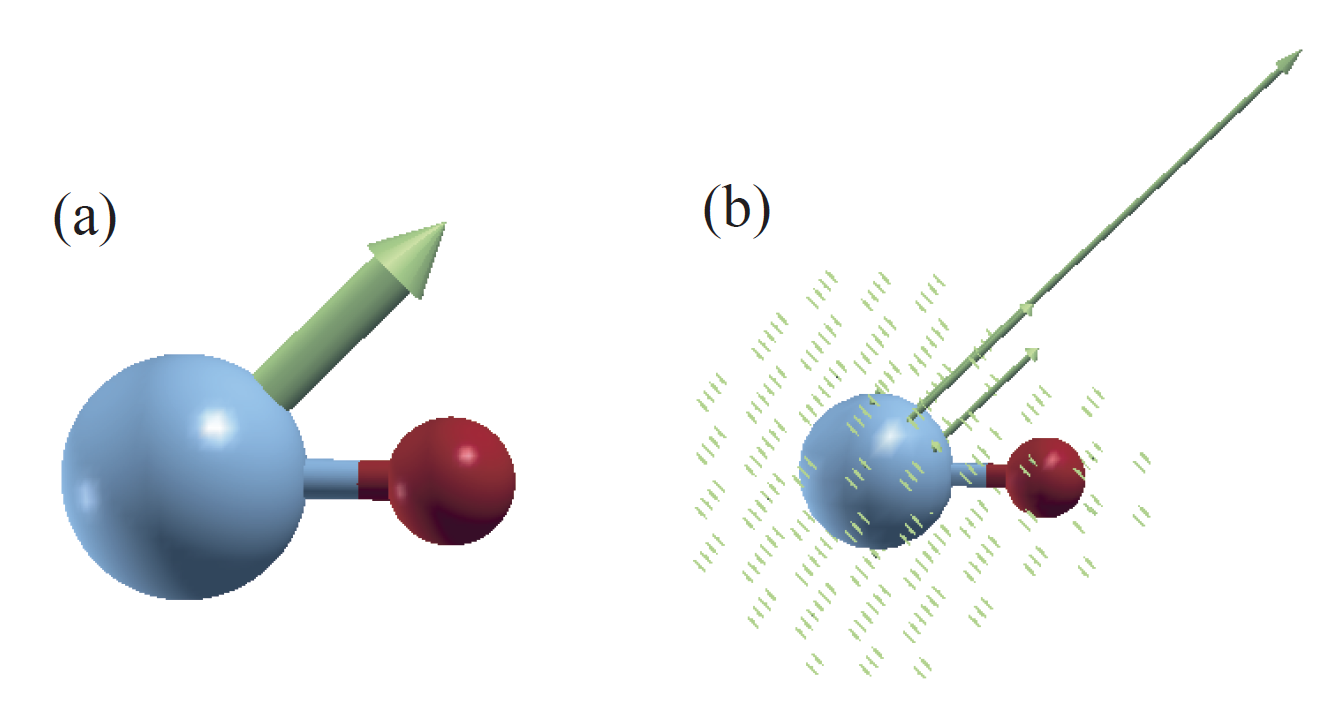Next: Relativistic effects Up: User's manual of OpenMX Previous: Natural population analysis Contents Index
A fully unconstrained non-collinear density functional theory (DFT) is supported including the spin-orbit coupling (SOC) [8,9,10,11,15]. When the non-collinear DFT is performed, the following option for the keyword 'scf.SpinPolarization' is available.
scf.SpinPolarization NC # On|Off|NCIf the option 'NC' is specified, wave functions are expressed by a two component spinor. An initial spin orientation of each site is given by
<Atoms.SpeciesAndCoordinates # Unit=Ang
1 Mn 0.00000 0.00000 0.00000 8.0 5.0 45.0 0.0 45.0 0.0 1 on
2 O 1.70000 0.00000 0.00000 3.0 3.0 45.0 0.0 45.0 0.0 1 on
Atoms.SpeciesAndCoordinates>
1: sequential serial number
2: species name
3: x-coordinate
4: y-coordinate
5: z-coordinate
6: initial occupation for up spin
7: initial occupation for down spin
8: Euler angle, theta, of the magnetic field for spin magnetic moment
9: Euler angle, phi, of the magnetic field for spin magnetic moment
Also, the 8th and 9th are used to generate the initial non-collinear
spin charge distribution
10: the Euler angle, theta, of the magnetic field for orbital magnetic moment
11: the Euler angle, phi, of the magnetic field for orbital magnetic moment
12: switch for the constraint schemes specified by the keywords
'scf.Constraint.NC.Spin', 'scf.NC.Zeeman.Orbital' and 'scf.NC.Zeeman.Orbital'.
'1' means that the constraint is applied, and '0' no constraint.
13: switch for enhancement of orbital polarization in the LDA+U method,
'on' means that the enhancement is made, 'off' no enhancement.
The initial Euler angles, System.Name.nc.xsf System.Name.ncsden.xsfwhere System.Name means 'System.Name' you specified. Two files 'System.Name.nc.xsf' and 'System.Name.ncsden.xsf' store a projected spin orientation to each atom by Mulliken analysis and the spin orientation on real space grids in a vector file format (XSF) supported by XCrySDen. Both the files can be visualized using 'Display
The spin moment and Euler angles of each atom, which are calculated by Mulliken analysis, are found in the file 'System.Name.out' as follows:
***********************************************************
***********************************************************
Mulliken populations
***********************************************************
***********************************************************
Total spin moment (muB) 4.998503442 Angles (Deg) 44.991211196 0.000000000
Up Down Sum Diff theta phi
1 Mn 9.59803 4.76902 14.36705 4.82901 44.99208 0.00000
2 O 3.40122 3.23173 6.63295 0.16949 44.96650 -0.00000
Also it should be noted that it is difficult to achieve a self consistent
field in the non-collinear DFT more than the collinear DFT calculation,
since there are many minima, having almost comparable energy, in the
spin orientation space, while the constraint DFT is useful for such a case.
In the non-collinear DFT, the inclusion of spin-orbit coupling is supported, while it is not supported for the collinear DFT. See also the Section 'Relativistic effects' for the issue.
 |
2016-04-03